How wide is too wide? This is a silly question, thought LG in 2009 when it released the LG BL40 New Chocolate. With a 4″ display with a cinematic 21:9 aspect ratio, this phone was unique for its time: At that point a typical phone had a 4:3 or 3:2 display, while media-focused devices went 16:9 to fit the emerging HDTV standard.But 21:9 was unheard of.

To some extent the aspect ratio determines the type of content displayed. Early televisions had square aspect ratios because they mostly showed the news – portrait images, basically. The growing number of televisions in the home has prompted movie theaters to expand to create an experience you couldn’t get on your couch.
In 1953 Twentieth-Century Fox introduced CinemaScope, giving the screen an aspect ratio of 2.35 or to give it as a fraction, 21:9. Movie television broadcasts had to crop the picture to fit 4:3 tubes or use letter boxing (which made the small television display even smaller). If you wanted a cinematic experience, you had to purchase a cinema ticket.

Fast forward half a century and you may have the CinemaScope experience in your pocket. The LG BL40 New Chocolate had a 4 inch TFT LCD with a resolution of 345 x 800 px. It’s 1/3 of HD resolution in terms of pixel count, but clocked in at a solid 217ppi. For comparison, the contemporary iPhone 3GS had a 3.5″ 3:2 display with a density of 165ppi, the first ever Galaxy phone with a 3.2″ 3:2 display with a density of 180ppi.



An iPhone and BL40 New Chocolate side by side
This beautiful display had to be kept safe from scratches, a duty entrusted to Gorilla Glass. As you can see, in addition to being ultrawide, it also had quite chunky bezels, so the entire phone measured 128x51x10.9mm (and weighed 129g).



The LG BL40 New Chocolate had a 4″ 21:9 (345 x 800px) display with Gorilla Glass protection
Watching movies on the go was clearly the main attraction of this phone. But something really strange happens between the prototype stages and the release. When we previewed the BL40, it happily handled DivX video up to 720p, but XviD support was wonky. At the time we wrote “Hopefully the final version of the UI fixed all these issues.”
It was with a pre-release unit. A month later we got our hands on a retail unit for proper review and were disappointed to find that things turned out differently: HD playback was no longer possible with either codec. The media player surpassed D1, which is the resolution typically used for DVDs (720x480px for its widescreen version).
DivX and XviD video both played well, and the display couldn’t really do much with HD footage (again, it had 345px on the short edge, less than half of HD’s 720px). But the phone did support TV-out (if you bought the right cable), so HD support would have been handy.


The media player cannot handle HD videos
If you wanted to watch on the go, there was Dolby Mobile (a precursor to Atmos for phones), which worked best with a headset plugged into the 3.5mm jack.
The jack was on top of the phone, sharing the bright red panel with the power key. Everything about the BL40 New Chocolate screamed “look at me!”, the top and bottom painted bright red to contrast with the piano black of the other sides, the silver trim that the side keys were embedded into, and even how tall this one was. telephone.
While the cinematic display dictated the design, the phone loved music almost as much. It even had a dedicated button for launching the music player. We have already mentioned the 3.5 mm jack, but there was another way to transmit music – an FM radio transmitter. Bluetooth 2.1 was also on board, but that was before the prevalence of high quality audio codecs and plenty of BT speakers.




LG BL40 Ċikkulata Ġdida
The LG BL40 New Chocolate was equipped with a 5MP camera with a Schneider-Kreuznach certified lens. You’d think LG built it to shoot impressive home movies, especially in 21:9 widescreen.
But no, the video recording capabilities were actually woefully inadequate: the videos were CIF resolution (352 x 288 px) and the frame rate was unpredictable, usually in the 10-20 fps range. It was 2009, the first phone with HD video capability was already on the market. D1 resolution would have been fine too, matching the playback capabilities of the phone, but instead we got the budget treatment of the phone.
By the way, this was not a proper smartphone. It worked with LG’s S-class UI that we originally saw on the LG Arena. It had a very skeuomorphic look and was full of 3D animations. LG wanted a show that matched the display.




The user interface of the S-Class has focused on the visual experience
The UI supported widgets on the home screen and had quick switches that could be pulled from the status bar. The system could multitask J2ME apps, but there was no split-screen support – it’s something that scales perfectly to the 21:9 aspect ratio but needed more advanced technology than what the New was built on. Chocolate.
Besides movies, gaming was another chance for the 4-inch ultrawide display to shine. Unfortunately, app stores were just becoming a thing at the time, and the S-Class UI didn’t have one. The phone came with several games pre-installed, all controlled by motion for some reason (let’s assume someone at LG was holding a Nintendo Wii controller and thought “this looks familiar”).
The coolest game of the bunch was Dual Match. It was named that way because two players could play in split-screen mode, both with a phone in hand. It was a clever use of the extra-tall display, but it’s probably not enough to make it into the mobile gaming hall of fame.




Dual Match on LG BL40 New Chocolate offered split screen multiplayer on one phone
Another fun, well, not exactly a “game” but a musical instrument thing, it let you play a scaled-down piano keyboard or virtual drum kit.


The New Chocolate also had a creative side
A few fun and clever uses of the extra tall display weren’t enough, the LG BL40 New Chocolate was a feature phone in a smartphone world. It was certainly a one-of-a-kind device – it would be years before we saw another 21:9 display – but the lack of a sequel tells us all we need to know about sales.
Would this have been more successful if it had run Android on a more powerful chipset? We can only speculate and the answer is probably “no” anyway. Netflix was mostly still known as a mail-order DVD company at the time, and those older 3G networks wouldn’t handle streaming video, not to mention how much it would cost the consumer.

This left the LG BL40 New Chocolate in the awkward position of being a multimedia phone where the user had to provide their own multimedia content. Many people did just that, many others didn’t (they made iTunes do it for them). Had it launched a few years later with Netflix’s cheap prices, falling data plan costs, and booming mobile game sales through app stores, “New Chocolate” might have become a household name by now. But the world wasn’t ready for a 21:9 display in your pocket.

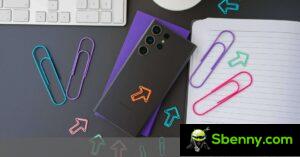
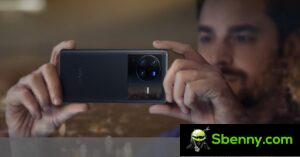
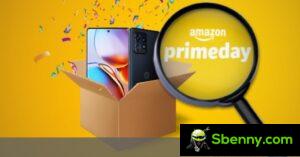
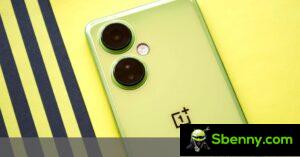

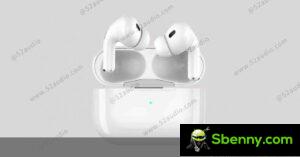
Ibda Thread ġdid